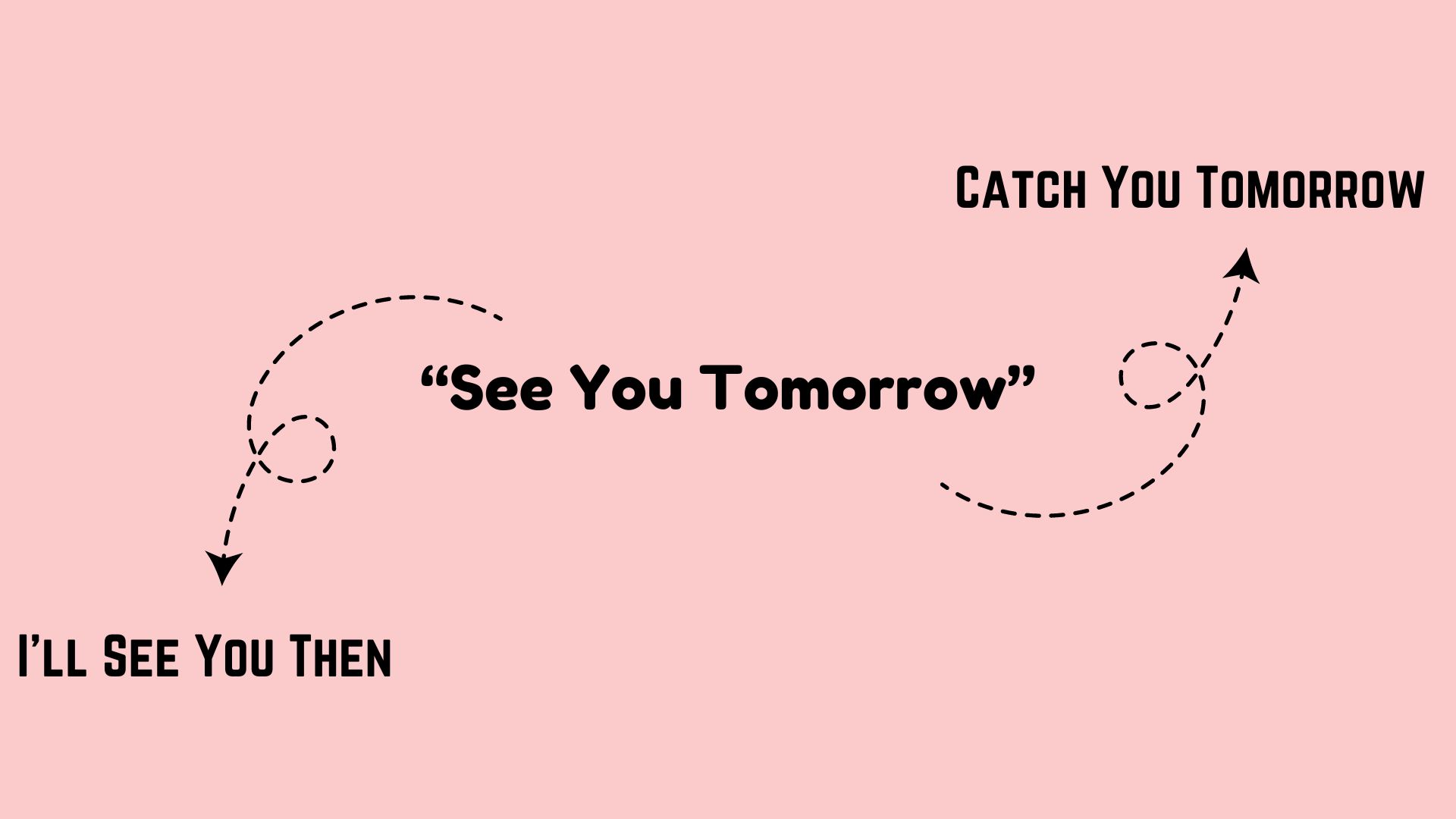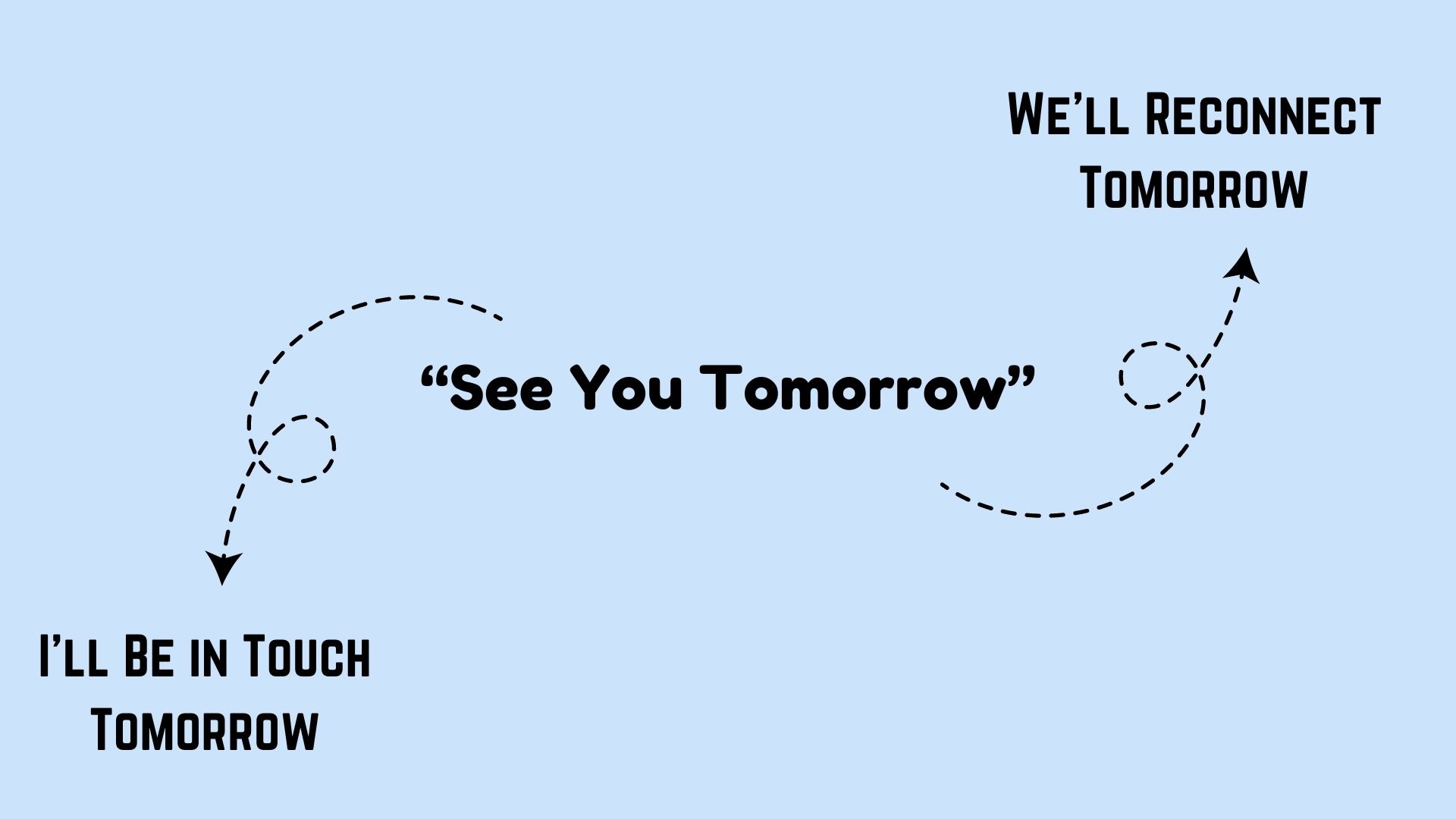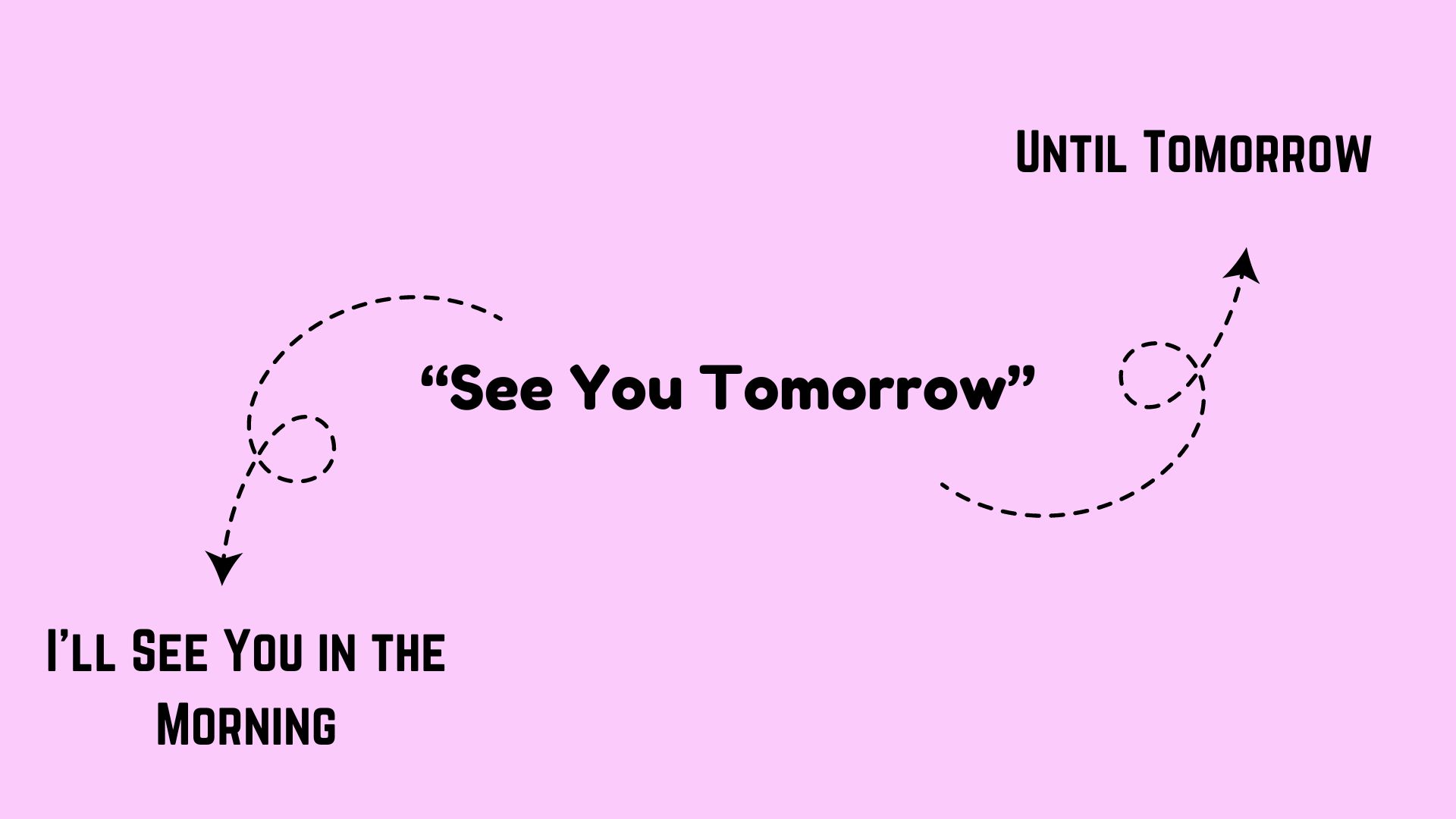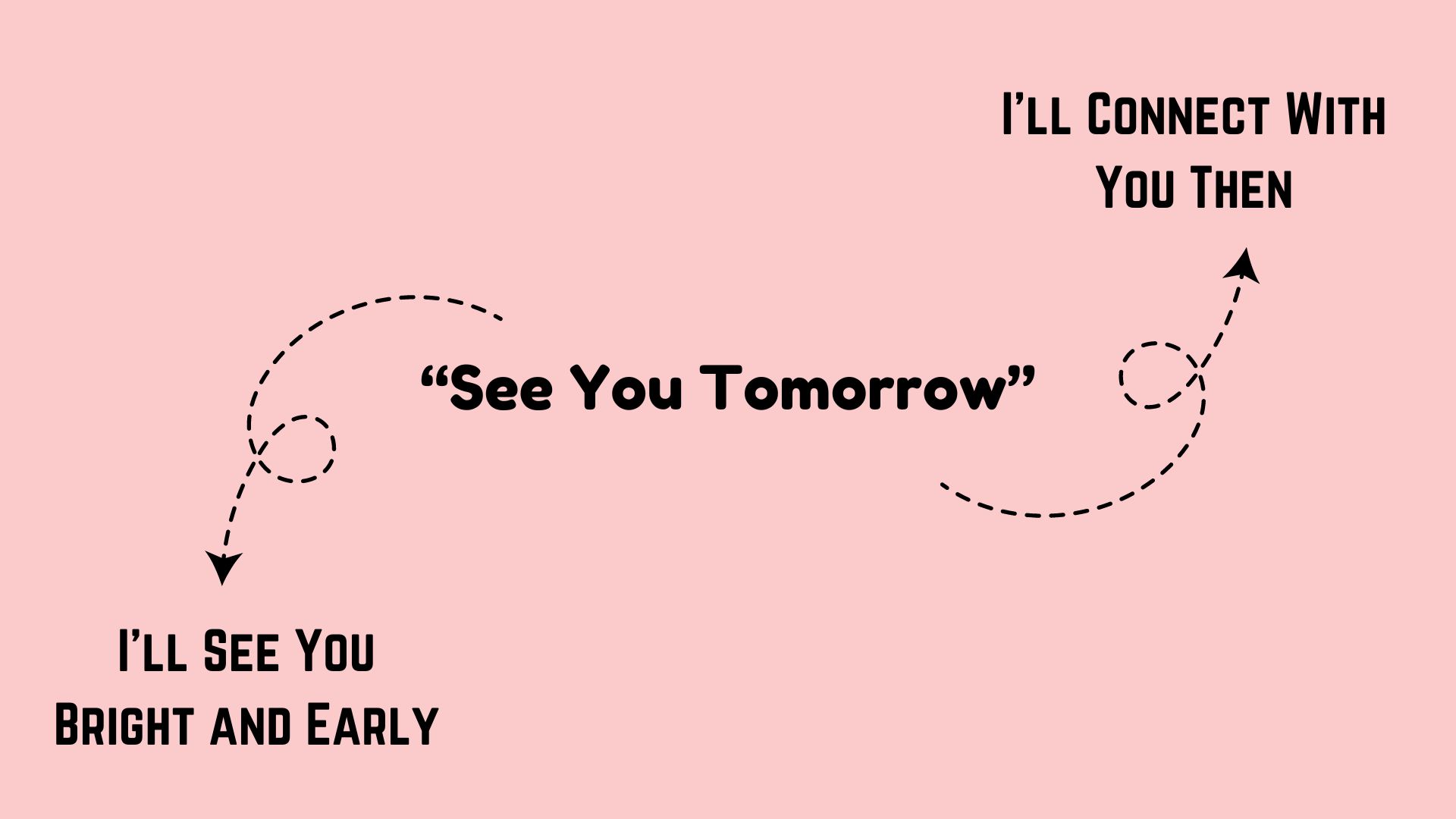In professional communication, saying “see you tomorrow” can be expressed in various ways. Here are 23 alternatives to convey the same sentiment, each with an example and specific use case.
1. Looking Forward to Our Meeting Tomorrow
Example: “I’m looking forward to our meeting tomorrow at 10 a.m.”
Use Case: When confirming a scheduled meeting for the next day.
2. I’ll See You Then
Example: “I’ll see you then for our discussion on the project.”
Use Case: When wrapping up a conversation and confirming the next interaction.
3. Catch You Tomorrow
Example: “Catch you tomorrow at the team briefing.”
Use Case: When informally confirming attendance at a meeting.
4. Talk to You Tomorrow
Example: “I’ll talk to you tomorrow to go over the updates.”
Use Case: When indicating you’ll follow up the next day.
5. I’ll Connect with You Tomorrow
Example: “I’ll connect with you tomorrow regarding the proposal.”
Use Case: When confirming a follow-up conversation.

6. Until Tomorrow
Example: “Until tomorrow, have a great evening!”
Use Case: When saying goodbye and confirming you’ll see the person the next day.
7. I Look Forward to Seeing You
Example: “I look forward to seeing you tomorrow at the conference.”
Use Case: When expressing anticipation for a scheduled event.
8. Let’s Touch Base Tomorrow
Example: “Let’s touch base tomorrow to finalize the details.”
Use Case: When suggesting a follow-up discussion.
9. I’ll See You at Our Scheduled Time
Example: “I’ll see you at our scheduled time tomorrow morning.”
Use Case: When confirming a specific appointment.
10. Until We Meet Again Tomorrow
Example: “Until we meet again tomorrow, take care.”
Use Case: When ending a conversation on a positive note.

11. I’ll See You Bright and Early
Example: “I’ll see you bright and early for our kickoff meeting.”
Use Case: When emphasizing an early start for the next day.
12. I’ll Be in Touch Tomorrow
Example: “I’ll be in touch tomorrow to discuss the next steps.”
Use Case: When confirming plans to follow up on a specific topic.
13. We’ll Reconnect Tomorrow
Example: “We’ll reconnect tomorrow to review the feedback.”
Use Case: When confirming a future conversation about a specific subject.
14. Looking Forward to Our Conversation
Example: “Looking forward to our conversation tomorrow afternoon.”
Use Case: When expressing eagerness for an upcoming discussion.
15. I’ll See You in the Morning
Example: “I’ll see you in the morning for the training session.”
Use Case: When confirming a morning meeting or event.

16. Until Tomorrow
Example: “Until tomorrow, feel free to reach out if you need anything.”
Use Case: When ending a conversation while indicating the next meeting.
17. I’ll Be There Tomorrow
Example: “I’ll be there tomorrow for our scheduled review.”
Use Case: When affirming your attendance at a specific event or meeting.
18. We’ll Touch Base in the Morning
Example: “We’ll touch base in the morning to go over the agenda.”
Use Case: When confirming plans to meet early the next day.
19. Looking Forward to Our Catch-Up
Example: “Looking forward to our catch-up tomorrow!”
Use Case: When anticipating a friendly or informal meeting.
20. I’ll See You Bright and Early
Example: “I’ll see you bright and early tomorrow for the kickoff.”
Use Case: When highlighting a morning meeting or appointment.

21. I’ll Connect With You Then
Example: “I’ll connect with you then to discuss the updates.”
Use Case: When confirming the timing of a future interaction.
22. Until Tomorrow, Stay Safe
Example: “Until tomorrow, stay safe and take care!”
Use Case: When concluding a conversation with a friendly note.
23. I’m Excited to See You Tomorrow
Example: “I’m excited to see you tomorrow for the presentation!”
Use Case: When expressing enthusiasm about an upcoming meeting or event.
These alternatives provide various professional ways to say “see you tomorrow,” ensuring clear and respectful communication in different contexts.

